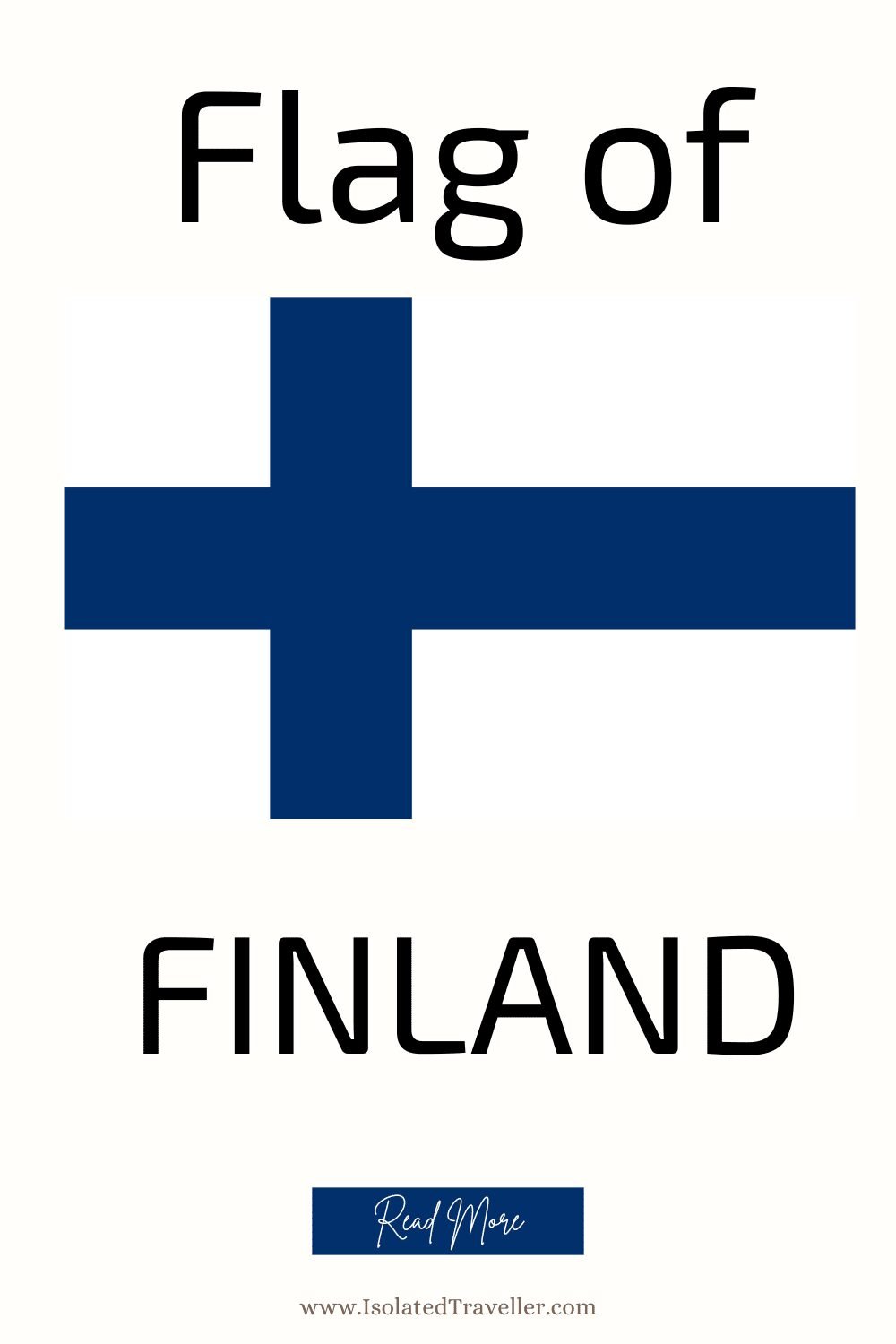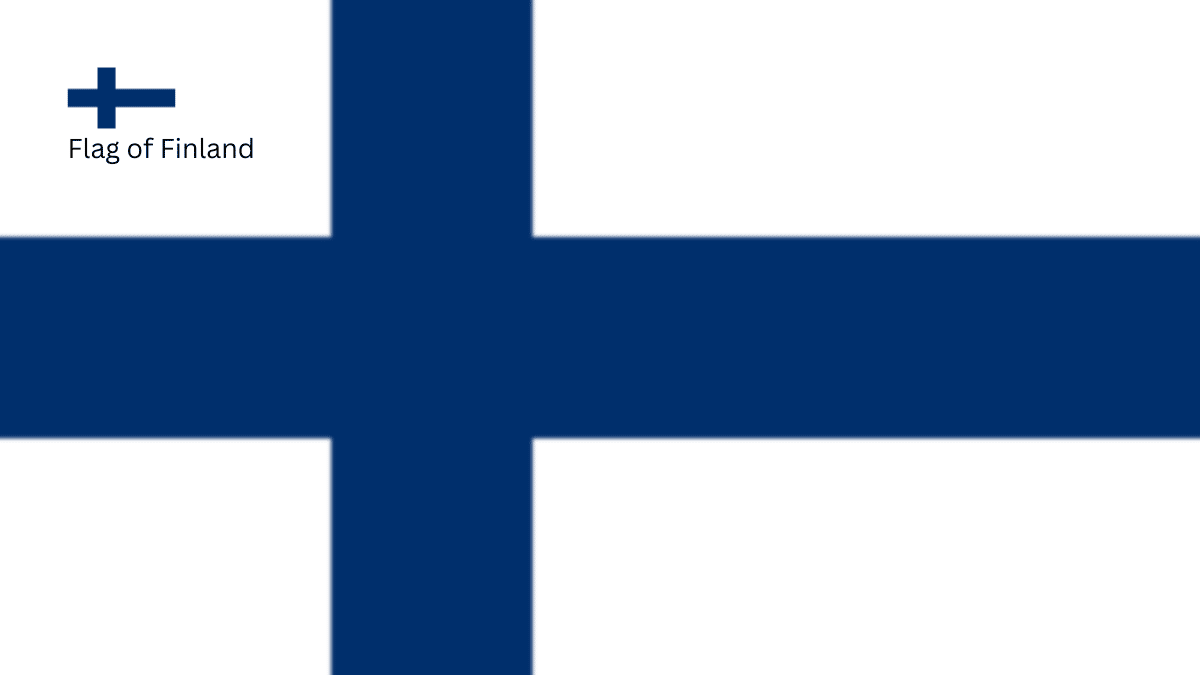Flag of Finland
The National Flag of Finland was adopted on May 29, 1918, less than 6 months after Finland declared its independence from Russia. The flag is also referred to as Siniristilippu “Blue Cross Flag”, in reference to the blue cross on a white field.
The flag has a rectangular shape with a ratio of 7:11, and the colours of the flag are prescribed by law. The white colour represents purity, innocence, and honesty, while the blue colour symbolizes loyalty, truth, and trust. The cross on the flag is a Scandinavian cross, which is a common symbol in the flags of Nordic countries.
Brief History of the Flag of Finland
The flag of Finland has a long and interesting history. The first known use of a white flag with a blue cross in Finland was during the Finnish War (1808-1809) when Finnish troops used a blue cross on a white background as their battle flag. This flag was known as the Suomen Lipun Hävittäjät, or the “Banishers of the Flag of Finland.”
The current design of the Finnish flag was adopted on May 29, 1918, after Finland declared its independence from Russia. The flag was designed to be a simple and easily recognizable symbol of the Finnish nation. The blue cross on a white background was chosen because it was already a well-known symbol of Finland and had a long history of use in the country.
The Finnish flag has remained largely unchanged since its adoption in 1918, with the only notable change being the addition of the coat of arms of Finland in the centre of the cross in 1978. The coat of arms consists of a golden lion on a red field, with the lion holding a sword and a cornucopia, symbols of power and prosperity. The coat of arms is surrounded by a golden wreath, which represents the country’s natural abundance and the continuity of its history.
The National Flag of Finland

Design and Symbolism
The design of the flag of Finland is simple and consists of a white field with a blue cross extending to the edges of the flag. The cross is a Scandinavian cross, which means that it extends to the corners of the flag.
The flag has a proportion of 11:18, which means that the width of the flag is approximately 11 units and the length is approximately 18 units.
The colours of the Finnish flag are prescribed by law and are defined as follows:
- The white colour of the flag is a symbol of purity, innocence, and honesty
- The blue colour is a symbol of loyalty, truth, and trust.
Together, the white and blue colours of the flag represent the values and ideals that are important to the Finnish people, such as equality, justice, and freedom.
The cross on the flag is a Scandinavian cross, which is a common symbol in the flags of Nordic countries. The cross is a symbol of Christianity and represents the country’s strong cultural and historical ties to the Christian faith. It also represents the country’s position as a member of the Nordic community of nations.
According to the Finnish Flag Act, the colours of the flag must be “clear and pure” and the flag must be made of a “durable and weather-resistant material.” The flag must also be treated with respect and may not be defaced or used in a way that is disrespectful or inappropriate.
In addition to the national flag, Finland also has a state flag and a naval ensign. The state flag is similar to the national flag, but it includes the coat of arms of Finland in the centre of the cross. The naval ensign is a white flag with a blue cross and a red border, with the coat of arms of Finland in the centre of the cross.
The State flag of Finland
The state flag of Finland is similar to the national flag, but it includes the coat of arms of Finland in the centre of the cross. The state flag is used by the Finnish government and is flown on government buildings, at official events, and at Finnish embassies and consulates abroad.
Learn more about the state flag of Finland
Conclusion
Overall, the design of the flag of Finland is simple yet powerful, with a clear and easily recognizable symbol that represents the Finnish nation and its people. The flag is a symbol of the country’s history, culture, and values, and it is a source of pride and national identity for the Finnish people.


